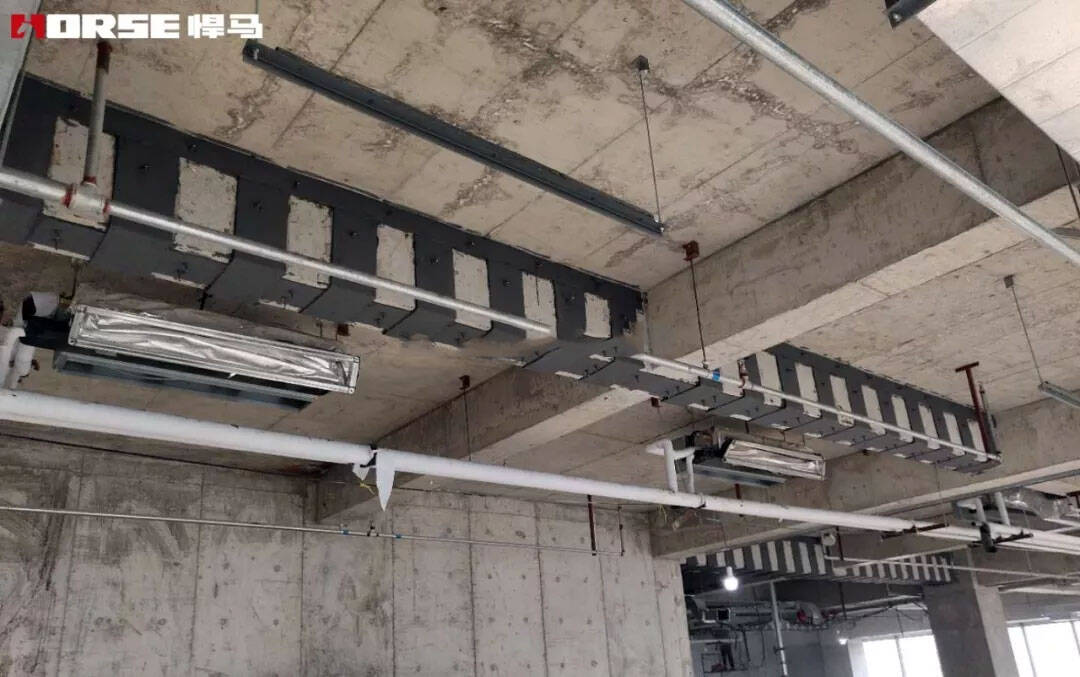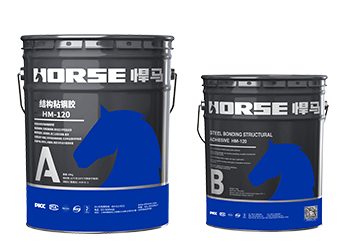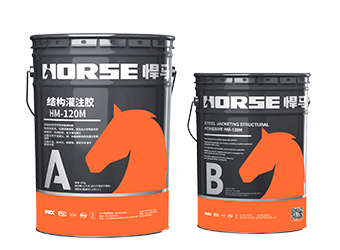Soluções
A Horse Construction oferece uma ampla gama de materiais de reforço estrutural, incluindo suporte técnico, suporte de documentação, suporte de produtos, suporte de software e suporte de projeto.
The influence of different steel plate reinforcement methods on the bearing performance of corroded reinforced concrete beams

Rebar corrosion is one of the main reasons for the degradation of the load-bearing performance of reinforced concrete (RC) structures. Among the existing highway bridges in China, more than 15% of RC bridges have peeled off the protective layer, cracked concrete and fractured steel bars due to steel corrosion. Therefore, reasonable maintenance and reinforcement methods are needed to strengthen the bridge to maintain its service performance.
As a convenient, economical and effective reinforcement method, steel plate reinforcement has been widely used in RC structural reinforcement projects. Among them, the main reinforcement methods are divided into bending reinforcement, shear reinforcement and combined bending and shear reinforcement.
In order to study the influence of different steel plate reinforcement methods on the bearing performance of corroded reinforced concrete beams, the reinforcement effects of different steel plate reinforcement methods are explored. The characteristics of bearing capacity, deformation, failure mode and ductility of corroded RC beams strengthened by steel plate bending reinforcement, shear reinforcement and combined bending and shear reinforcement are studied through static load test, and the advantages and disadvantages of different reinforcement methods are analyzed.
Research indicates:
1) Compared with corroded beams and non-corroded beams, steel plate reinforcement can effectively improve the ultimate bearing capacity of beams. The combined reinforcement effect is the most obvious, and its ultimate bearing capacity is 107.7% higher than that of the corroded beam. When the thickness of the flexurally strengthened corroded beam steel plate is 3, 4, and 5mm, each increase of 1mm in thickness will increase the ultimate bearing capacity of 7-18kN.
2) Each reinforcement method can improve the deformation resistance of the corroded beam. The combined reinforcement of corroded beams has the strongest resistance to deformation, followed by flexural reinforcement of corroded beams. At the same time, the increase of the thickness of the steel plate has a positive effect on the deformation resistance of the corroded beams.
3) Combination reinforcement can improve the ductility of corroded beams more effectively than the other two reinforcement methods. Compared with corroded beams, the ductility can be increased by 320.4%, followed by shear reinforcement of corroded beams. The ductility of the flexurally strengthened corroded beam is smaller than that of the first two beams, and it first increases and then decreases with the increase of the thickness of the steel plate. It is necessary to comprehensively consider the deformation resistance and ductility when evaluating the effect of flexural and shear strengthening of corroded beams.
Você pode encontrar tudo o que precisa aqui. Confie e experimente esses produtos, você vai perceber uma grande diferença depois.

O adesivo de colagem de placa de aço estrutural HM-120 é um produto epóxi de dois componentes, com forte adesão, cura em temperatura ambiente. Possui excelentes propriedades antienvelhecimento, resistência ao choque em autoadesão e adesão mútua de aço e co

O adesivo para revestimento de placa de aço HM-120M é um adesivo de perfusão estrutural de construção de resina epóxi modificada de novo tipo, especificamente para suportar reforço de barra colada adesiva. Pode ser colado com vários substratos e metais, co